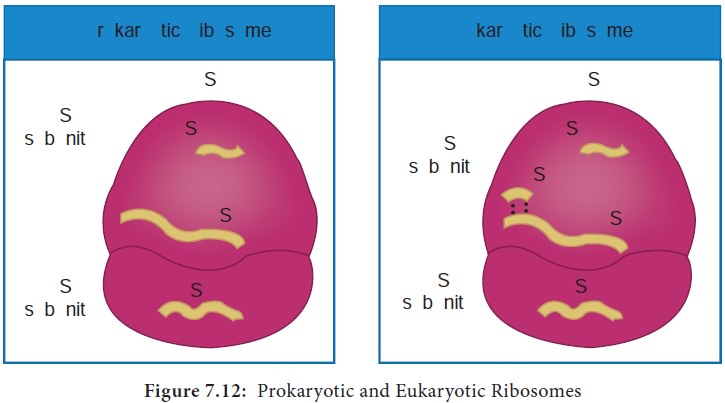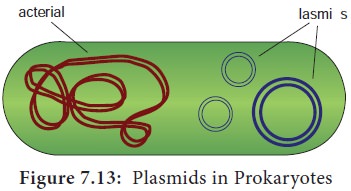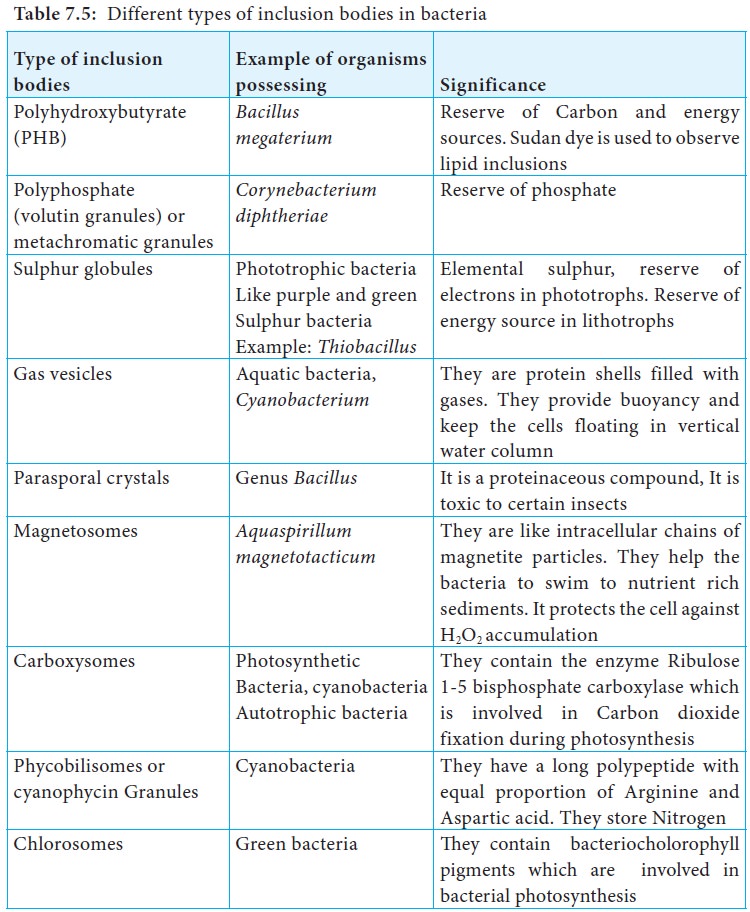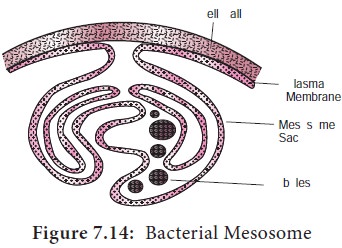Chapter: 11th Microbiology : Chapter 7 : Morphology of Bacteria
Structures Internal to Cell Membrane of Bacteria
Structures Internal to Cell
Membrane of Bacteria
Cytoplasm is called as the internal matrix of the cell inside
the cell membrane. Its major component is water (70-80%). It also contains
proteins carbohydrates, lipids, inorganic ions, and certain low molecular
weight compounds. Inorganic ions are present in much higher concentrations in
cytoplasm than in most media.
Cytoplasm is thick, aqueous, semi-transparent and elastic. The
major structures in the cytoplasm of prokaryotes are nucleoid (containing DNA),
ribosomes and reserve deposits called inclusions. Prokaryotic cytoplasm lacks
certain features of eukaryotic cytoplasm such as a cytoskeleton and cytoplasmic
streaming.
Ribosomes
All living cells contain ribosomes. They are the sites of
protein synthesis. High number of ribosomes represents the high rate of protein
synthesis. Prokaryotic ribosomes are freely found in the cytoplasm, whereas
eukaryotic ribosomes are attached to the cell membrane. Prokaryotic ribosomes
consists of protein and a type of RNA called ribosomal RNA. They are smaller
and less dense than the eukaryotic ribosomes. The ribosomes of prokaryotes are
70S where as that of eukaryote are 80S (Figure 7.12).

Nucleus
The nuclear area has the hereditary material of most bacteria.
It contains a single, circular, long, continuous, thread like double stranded
DNA called the bacterial chromosome. Some bacteria with linear chromosome also
exist. It carries the information required for the cells structure and
function. They are not surrounded by a nuclear envelope and are devoid of
highly conserved histone proteins. The nuclear area can be spherical, elongated
or dumbbell shaped. In actively growing bacteria, as much as 20% of the cell
volume is occupied by DNA, because such cells presynthesize nuclear material
for future cells. The chromosome is attached to the cell membrane. Proteins in
the plasma membrane are believed to be responsible for the replication of the
DNA and segregation of the new chromosomes to daughter cells in cell division.
Plasmids
Apart from the bacterial chromosome, bacteria also contain small
circular, double stranded DNA molecules called plasmids (Figure 7.13). Plasmids
are self replicating extra chromosomal genetic elements. Plasmids may carry
genes for activities such as antibiotic resistance and tolerance to toxic metals.
Examples: Fertility plasmid (F plasmid), Resistance plasmid (R plasmid) and
colicin plasmid (Col plasmid).

Molecular Chaperones
They are the helper proteins which recognize the newly formed
polypeptides and fold them into their proper shape of secondary and tertiary
structure. Many chaperones are involved in proper folding of bacteria. They
were first identified in Escherichia coli
mutant. Example: Heat shock proteins are produced in Escherichia coli cells subjected to live at high temperatures, or
in any other stressful unfavorable conditions.
Inclusions
The cytoplasm of prokaryotic cells has several kinds of reserve
deposits known as inclusions. Cells may accumulate certain nutrients when they
are plentiful and use them when they are deficient. Some inclusions are common
to a wide variety of bacteria whereas others are limited to certain species
(Table 7.5).

Endospores:
Some species of bacteria produce metabolically dormant
structures called spores. They are highly durable and dehydrated resting bodies
produced inside the cells. They are formed by bacteria only when there is lack
of water or depletion of essential nutrients in the environment. Endospores are
coated with a specific chemical compound diaminopimelic acid. It binds with the
Calcium and forms Calcium dipicolinate which removes the water from it and
makes the spore resistant to extreme conditions Example: Bacillus anthracis and Clostridium
tetani possess endospores.
Mesosomes
Generally prokaryotes do not have cytoplasmic organelles like
mitochondria and chloroplast. It contains mesosome as their organelle. They are
the invaginations of the cell membrane and they are in the form of tubules,
vesicles or lamellae. They are seen in both Gram positive and Gram negative bacteria,
generally more in Gram positive bacteria. They are located next to the septa or
cross walls in dividing bacteria (Figure 7.14). They may be involved in cell
wall formation during division or play a role in chromosome replication and
distribution to daughter cells. If they are located near to the surface they
are called peripheral mesosomes and if they are located deep into the cytoplasm
they are called central mesosomes.

Related Topics